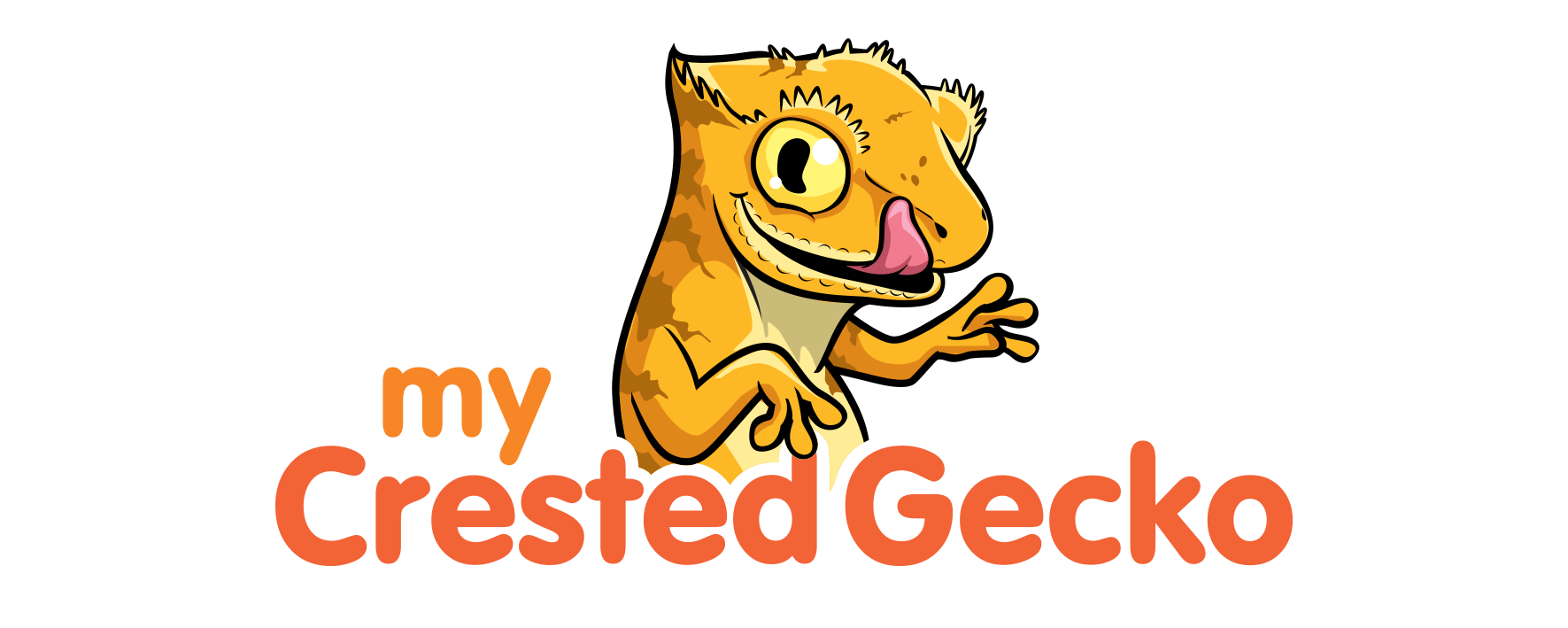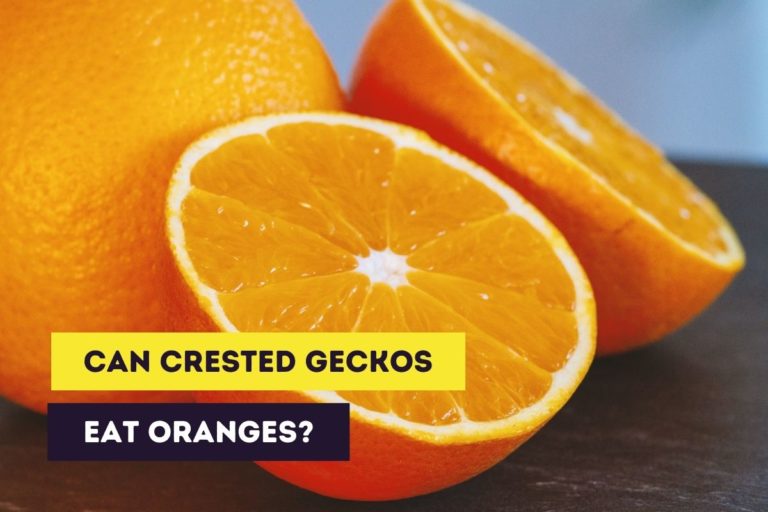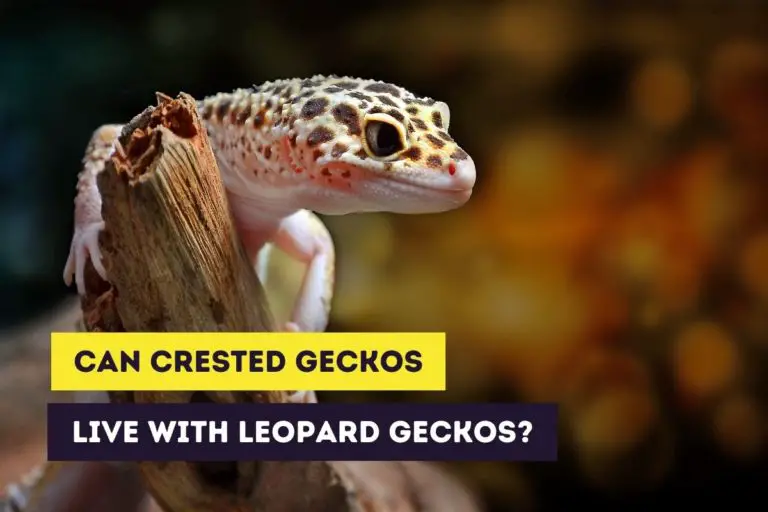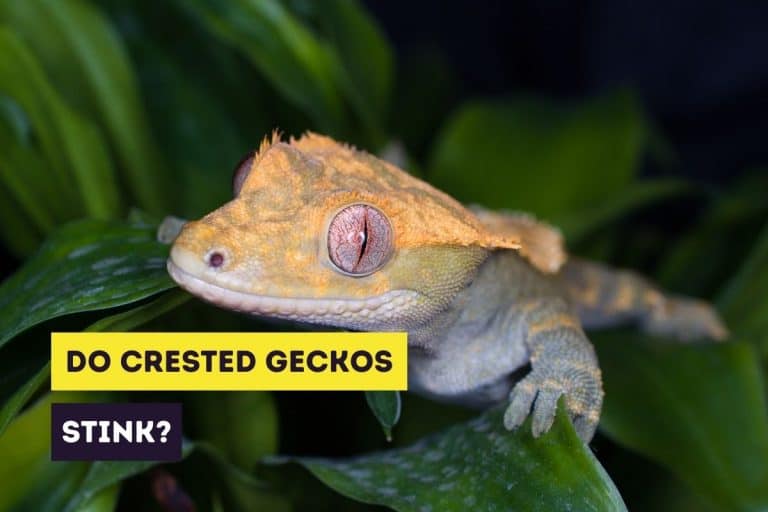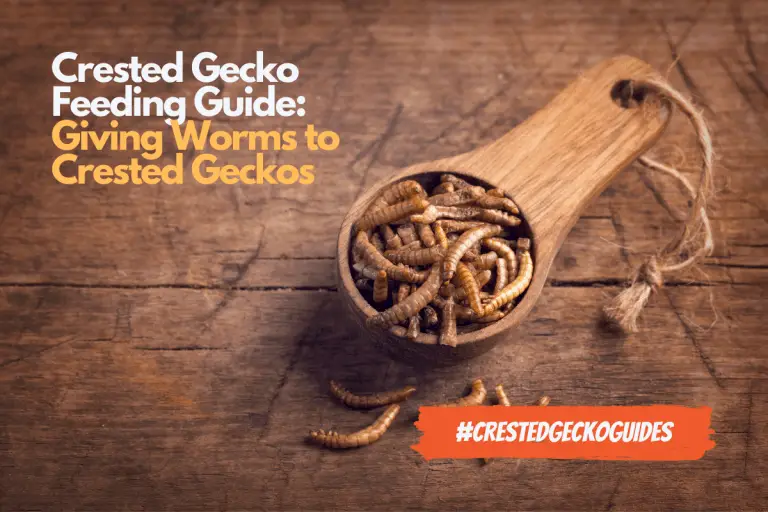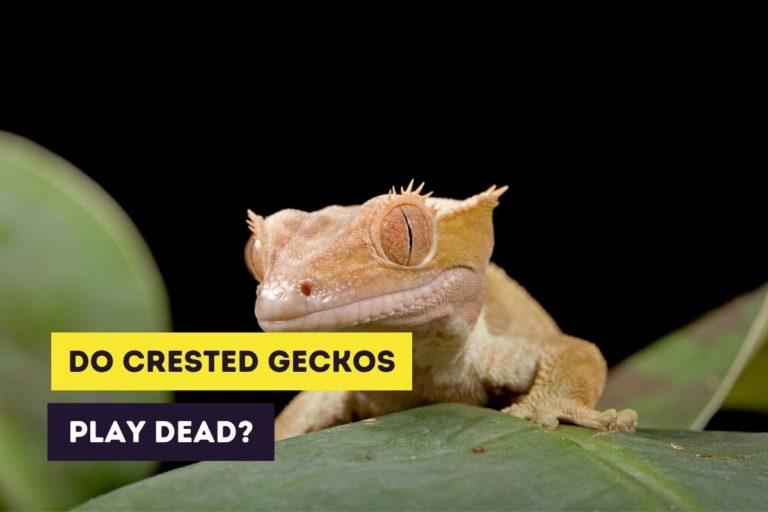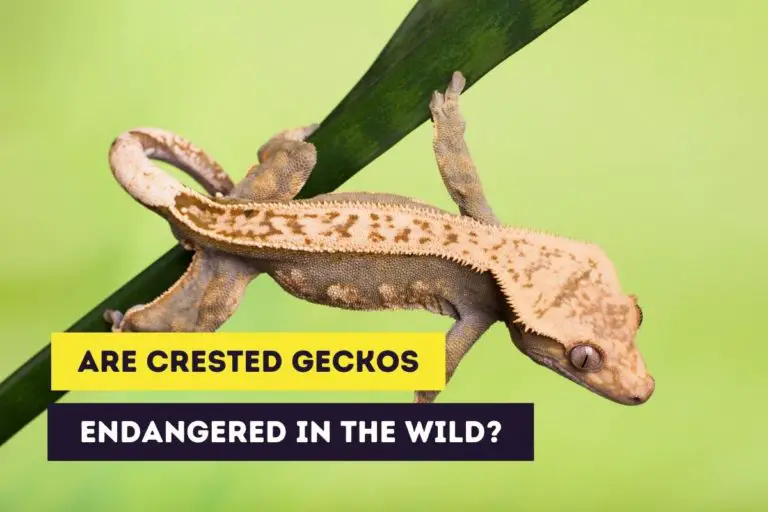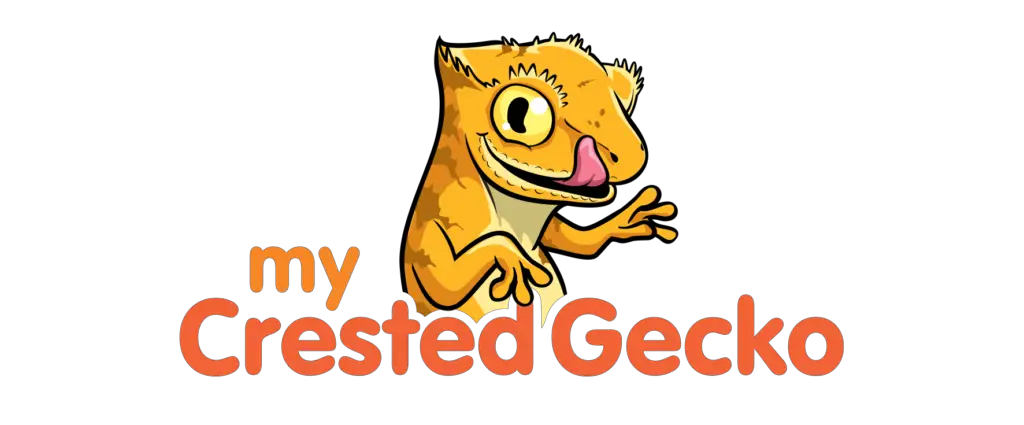Can Crested Geckos Eat Superworms (Morio Worms)?
Mealworms and superworms are sometimes mistaken for each other but are definitely not the same. Superworms are not suitable as feeder insects for all reptiles. But can crested geckos eat superworms (also known as morio worms)?
Crested geckos can eat superworms but it isn’t recommended. Superworms are large, can cause impaction, and have strong mandibles. If you do feed superworms you should only do so once a month and only give one or two superworms. There are far better alternative feeder insects that you can give.
Although superworms aren’t suitable for crested geckos, they can be fed to other reptiles. Also, some crested gecko owners have fed superworms to their crested gecko and have done so without problems.
From my personal viewpoint, I wouldn’t feed superworms to my crested geckos. But if you do this, you should always be cautious. Make sure that your crested gecko chews on his food and only feed superworms that aren’t too big.
If you’re interested in stickers or other products of crested geckos, you can always visit our Etsy Shop, which is called Artful Animalia. We currently only send stickers in the United States. If you’re interested in certain crested gecko-related products, don’t hesitate to contact us.
In this article, you’ll learn why superworms aren’t suitable as feeder insects for crested geckos. You’ll learn how to feed them to crested geckos (in moderation). We’ll also give alternatives to superworms that can be fed to crested geckos.
This site contains affiliate links to products we recommend and use ourselves. We may receive a commission for purchases that you make through these links. If you’re interested in learning more about our affiliate links, please visit our (affiliate) disclaimer.
What Are Superworms?
Superworms (Zophobas morio) are also called morio worms, king worms, or Zophobas. They are the larval stage of a species of darkling beetle, just like mealworms. Superworms are sometimes confused with giant mealworms (Tenebrio molitor), which are also available as feeder insects.
Appearance
Superworms look like very large mealworms and can measure up to 2.25 inches (60 mm). However, these worms have a very dark color and a stinger. Below you can find an image of a mealworm and one of a superworm.
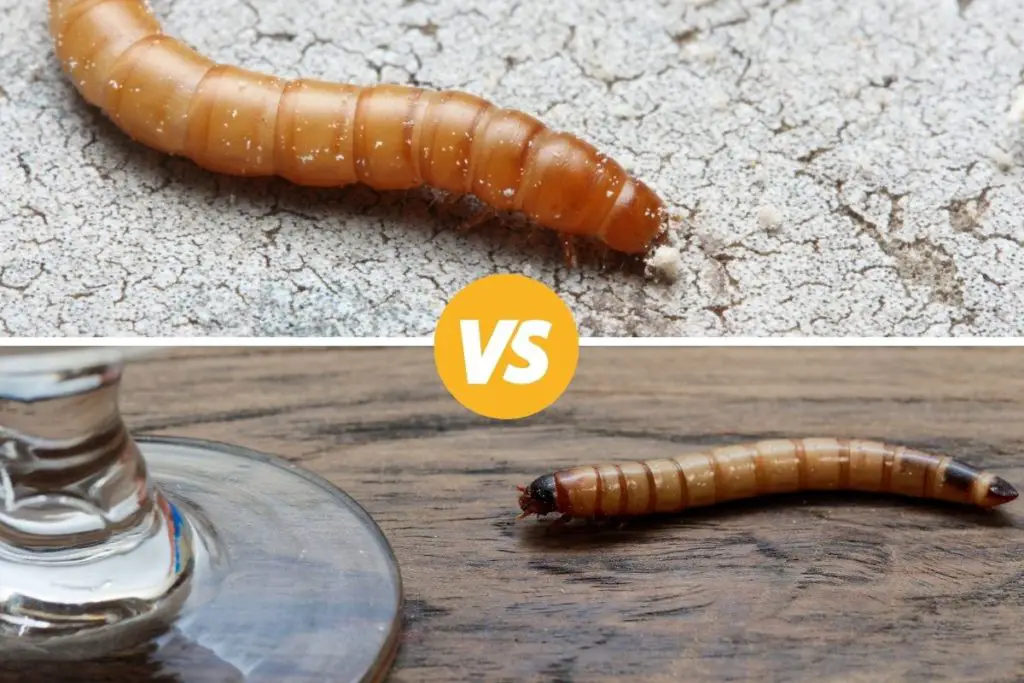
Lifecycle
As already mentioned, the superworm is the larval stage of the Morio beetle. Superworms go through four stages of life: egg, larva, pupa, and adult.
Superworms will eat and fill themselves with enough food to grow and pupate. They last much longer in the larval stage than mealworms. This larval stage can last three to five months [1]See for example https://flukerfarms.com/reptile-u/care-sheets/superworm-care-sheet and https://www.joshsfrogs.com/catalog/blog/2009/01/superworm-care-sheet/.. Some sources even say that the larval stage can last up to one year [2]See: https://sciencing.com/superworm-life-cycle-5347598.html. When the superworm is mature, it will become a pupa.
Superworms generally reach a length of 2.25 inches (60 mm) which is 2 to 3 times bigger than mealworms.
Superworms as a food source for crested geckos
Nutritional value
Since superworms are a popular choice among feeder insects, their nutritional value is well-known. The following table shows the average nutritional value for superworms as feeder insects based on the numbers in the MSD Veterinary Manual.
| Components | Value (average) |
|---|---|
| Dry Matter | 40.6 % |
| Protein | 17.4 % |
| Fat | 17.9 % |
| Calcium | 0.01 % |
| Phosphorus | 0.02 % |
| Ca:P Ratio | 1:2 |
Why shouldn’t crested geckos eat superworms?
Superworms have strong mandibles capable of biting
One of the reasons why superworms aren’t recommended as feeder insects for crested geckos is the strong mandibles of the superworm.
The idea that superworms can bite while in the stomach is often considered a myth. The evidence that superworms can hurt crested geckos or other reptiles by biting (in the stomach) is primarily anecdotal (see for example Pangea Forum and Geckos Unlimited Forum).
On Youtube, you can find videos that discuss whether superworms can bite through the skin. For example:
Superworms are a risk of impaction
Another reason why superworms are often not recommended is the risk of impaction. But this risk also exists with mealworms. Scientific research estimates the chitin content of superworm larvae between 3.9 and 6% [3]See https://academic.oup.com/jinsectscience/article/21/2/13/6218202 for more sources.. However, the chitin content of mealworm larvae is higher according to research (giant mealworm larvae: 6%, common mealworm larvae: 13%). [4]See … Continue reading.
So the chitin content of superworms is lower (less than half) than that of mealworms. They should be easier to digest than mealworms. But this doesn’t mean that they can’t cause impaction.
Superworms are large feeder insects
Another reason why superworms aren’t recommended is their size. Superworms grow up to 2.25 inches (60 mm) which is almost three times larger than mealworms. Crested geckos should only be fed feeder insects that are as big as their head (space between their eyes). Only small superworms will be this size. You could cut the superworm into smaller pieces to resolve this problem.
Feeding Superworms to Crested Geckos
While I don’t recommend feeding superworms to crested geckos, you can feed them but only in moderation. Below you can find the feeding instructions. Always be careful and watch your crested gecko for signs of possible impaction after feeding superworms.
How many superworms can you feed to your crested gecko?
Crested geckos can eat up to two superworms per serving (once a month). However, superworms aren’t nutritional and are only a treat, even when gut-loaded and dusted. Always start with just one superworm and learn from the experience. I recommend giving a maximum of two superworms per serving.
What size superworms can you feed to your crested gecko?
Crested geckos can eat superworms that are as big as their head. You can use the distance between their eyes as a general rule to know if the superworm is too big to feed to your crested gecko. If the superworm is too big, you can always cut it into smaller pieces before feeding it to your gecko.
How often can you feed superworms to your crested gecko?
Superworms can be fed once a month to a crested gecko. However, because of their low nutritional value and risk of impaction, they should never be the base of a balanced crested gecko diet. Instead, it’s better to feed other insects that are more nutritional such as crickets, dubia roaches, or black soldier fly larvae.
How to feed superworms to crested geckos?
Superworms can be fed by using a tong. You can also let your crested gecko hunt the superworms by placing the worms with your gecko in a separate tank. Lastly, you can place the superworms in a small bowl in the terrarium. This prevents them from burrowing in the substrate.
You’ll often find the advice to crush the head of the superworm before feeding them. This isn’t necessary if your crested gecko chews well on his food. If you do want to be extra careful, you can crush the head, but this might make your crested gecko less interested in them because they won’t wiggle.
When you use a bowl, make sure that you get a bowl where live superworms can’t get out, such as this bowl from Exo Terra.
Can hatchlings and juvenile crested geckos eat superworms?
Hatchlings are too small to eat superworms and benefit more from a well-balanced diet focused on their growth. However, juvenile crested geckos can start eating superworms once a month as long as the superworm isn’t too big.
What to do with leftover superworms?
If your crested gecko doesn’t eat (all) superworms you’ve fed, you’ll need to dispose of the leftover worms. The best way to do this is to place the worms in a sealed bag or container and put them in a freezer for at least 24 hours. After 24 hours, you can put them in your garbage.
Alternative Feeder Insects
Superworms are only one of a multitude of feeder insects that are available for reptiles. For crested geckos, there are much better feeder insects available. The most commonly available and best alternatives are:
- crickets
- dubia roaches
- black soldier fly larvae
Crickets
Crickets are probably the most popular feeder insects for reptiles. There are different kinds of crickets available, but banded crickets are best known as feeder insects.
Crickets are a source rich in protein and low in fat. Like all feeder insects, they should be gut-loaded and dusted to provide the best nutrition to your crested gecko. One of the best options to buy banded crickets for your crested geckos is Josh’s Frogs.
Dubia roaches
Dubia roaches are another popular feeder insect for reptiles and amphibians. They can’t jump or climb on smooth surfaces, which makes them easier to keep than crickets.
Dubia roaches have a higher protein content than crickets and are quieter than crickets. They also don’t give a strong odor (when they die), often a problem with crickets. Josh’s Frogs also sell dubia roaches and sell them in small packages.
Black soldier fly larvae
Black soldier fly larvae are also called Phoenix worms and are available in most countries.
Contrary to most other feeder insects, black soldier fly larvae have a high percentage of protein and calcium. They are an excellent feeder insect for crested geckos. Josh’s Frogs sells packages of black soldier fly larvae.
Want to Learn More?
If you want to learn more about crested geckos as pets, please read the following articles.
- Is is safe to leave crickets in with my crested gecko?
- Can crested geckos eat mealworms?
- Can crested geckos eat bananas?
If you’re interested in getting crested geckos as pets you should also definitely read our article about baby and juvenile crested gecko care or (adult) crested gecko care.
References
